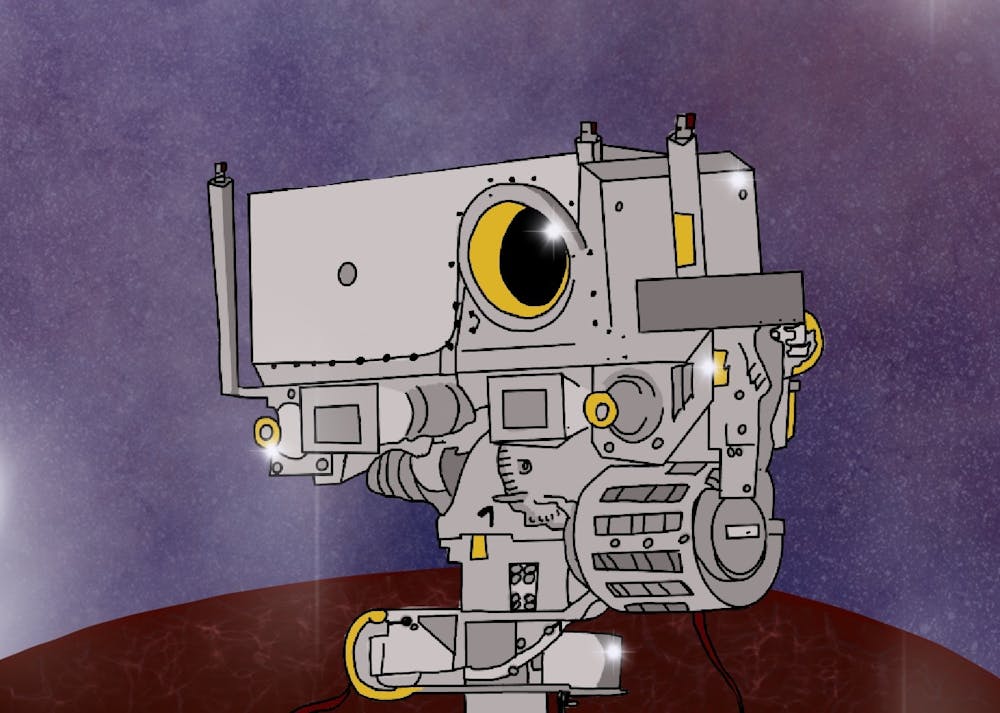The Mars 2020 Perseverance rover landed at Jezero Crater on Mars Thursday afternoon with the ASU-developed Mastcam-Z camera system on it.
According to NASA, it’s believed the crater was once home to a body of water and may have contained microbial life or microscopic organisms such as bacteria, archaea and protists.
The rover's mission is to explore the Jezero Crater region to observe and collect samples for possible retrieval in future missions.
The development of Mastcam-Z, the two-camera system at the head of the rover, was led by ASU professor Jim Bell. The camera will provide 3D pictures and high speed video for researchers to examine distant objects, according to Bell.
READ MORE: Mars 2020 Perseverance rover launches equipped with ASU-developed camera
Mastcam-Z brings unprecedented imaging technology for future Mars explorations. The camera's zoom will allow Perseverance to look closely at areas before actually going there.
"If there were a good size housefly about a hundred meters away at the opposite end of the football field, we would be able to tell it’s a housefly," Bell said during a Q&A session ahead of the landing.
Samantha Jacob, a graduate student under Bell, said in the Q&A that even though she had previously worked on the Mars Curiosity Rover, this mission is different.
"I had just joined the Curiosity mission a few weeks before that one landed, but this is a bigger ordeal today," Jacobs said.
This rover will be the first to collect samples in hopes of the samples being retrieved and returned to Earth by future missions.
Landing on Mars is difficult – only about 50% of all previous Mars landing attempts have succeeded. When the rover landed, researchers jumped and high-fived across the glass walls of the School of Earth and Space Exploration's building.
Mohini Jodhpurkar, a graduate student studying geological sciences who works with Bell on the mission, said that working on a project like this one was a lifelong goal.
“I’m super excited cause this is my first time being involved in a mission," Jodhpurkar said. "I’ve always dreamed of having the chance to actually be involved in science like this."
Perseverance’s prime mission is collect samples and have them ready for caching on the surface. Mastcam-Z will help pick the “best” rocks that show signs of past life, examine the terrain textures and search for signs of water, researchers said.
Bell said what’s driving the mission to Mars is to discover what we can learn about ourselves.
“What can we learn about the origin evolution of life on our own planet? What can we learn about the presence, existence and form of life elsewhere in our solar system, in our galaxy and beyond,” Bell said.
Bell believes that these new technologies can help us answer long-asked questions like, "are we alone?" and "how did we get here?” He said that exploring Mars, with its proximity to Earth, can test those questions.
Reach the reporter at Lizbet.Flores@asu.edu and follow @florelizbet on Twitter.
Like The State Press on Facebook and follow @statepress on Twitter.
Continue supporting student journalism and donate to The State Press today.




